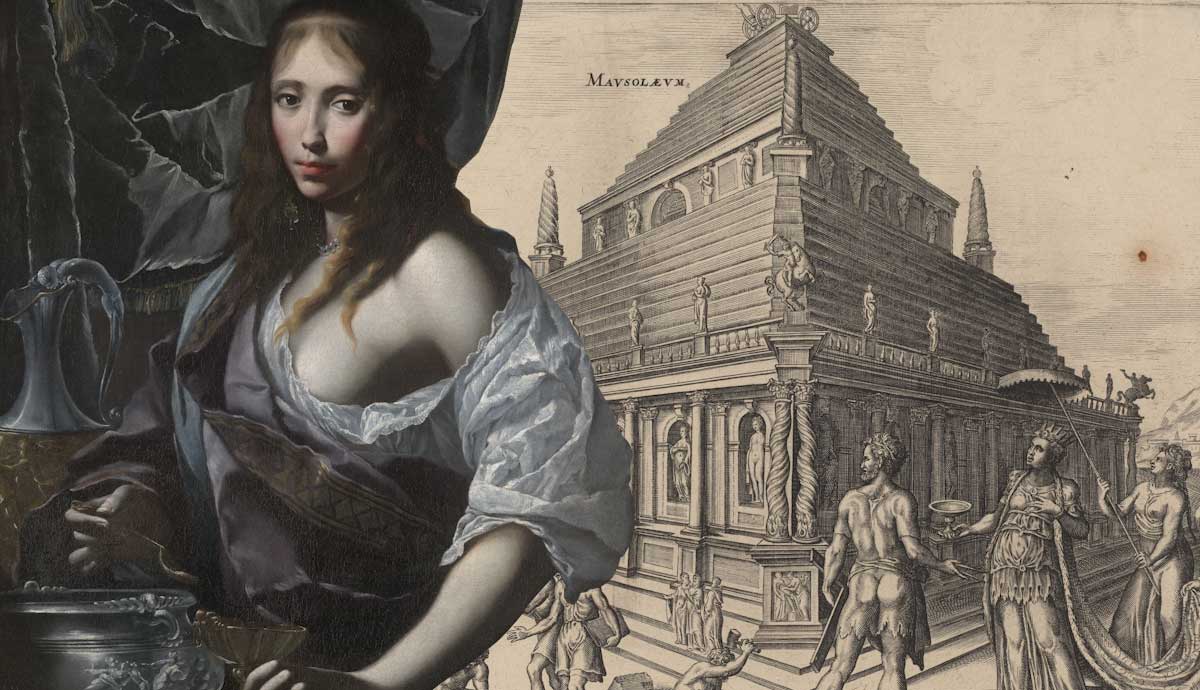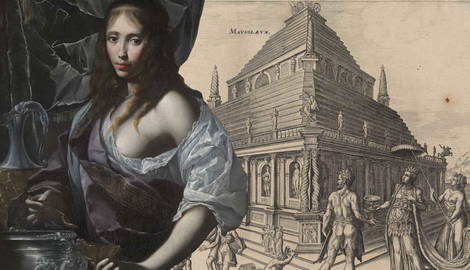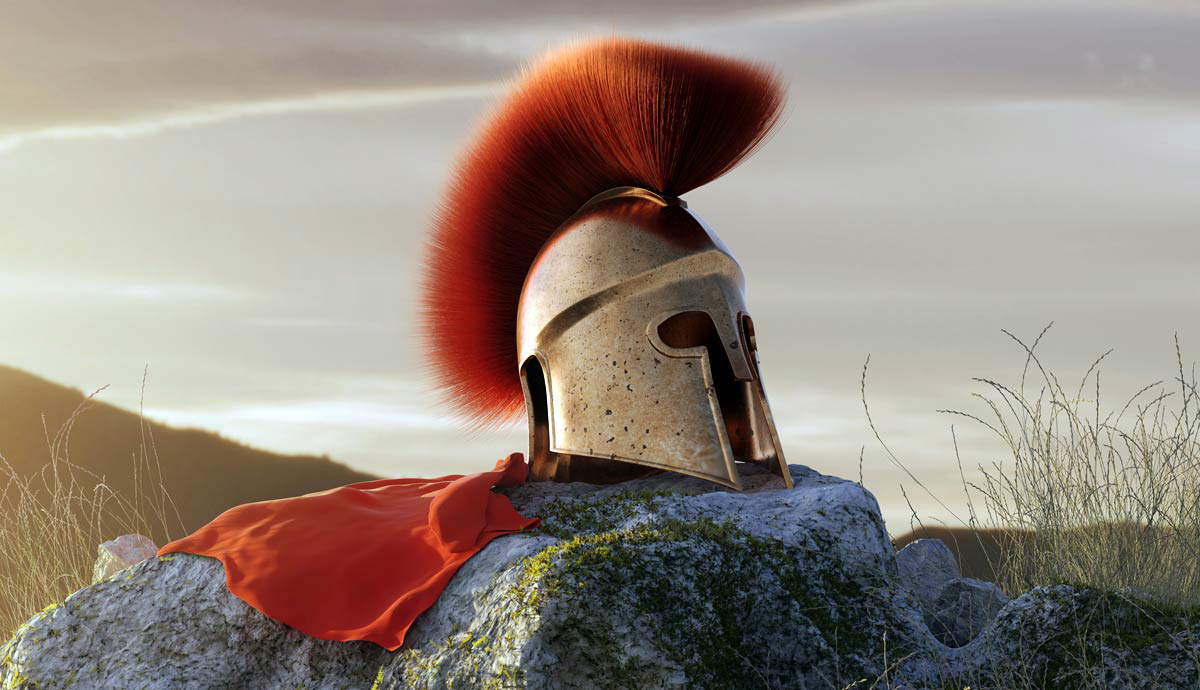
There is a certain irony underpinning the list of monuments compiled by the ancient Greeks, now known as the Seven Wonders of the Ancient World. The wonders were understood to be theamata (“sights”), or things worth seeing. However, it’s now impossible to see the vast majority of these wonders at all. The only one still standing is the Great Pyramid. The most long-lived of all the traditional ancient wonders besides the Great Pyramid was the Mausoleum of Halicarnassus, a vast edifice that was also a tomb for a powerful dynast. It stood proudly on the Ionian coast for almost two millennia before its destruction.
Quick Facts About the Mausoleum at Halicarnassus
| Built | c. 353-351 BCE |
| Creators | Greek architects Satyros and Pythius of Priene. Artists Leochares, Bryaxis, Scopas, and Timotheus decorated the four sides of the tomb. |
| Location | Built on a hill overlooking the city of Halicarnassus. |
| Overview | A 45-meter-tall marble tomb built for Mausolus, king of Caria, and his wife, Artemisia II. |
| Destruction | Destroyed by earthquakes in the 15th century. |
Before the Mausoleum of Halicarnassus: The Rise of King Mausolus

Although it was listed as a wonder of the ancient world by the ancient Greeks, the story of the Mausoleum of Halicarnassus begins in the Persian Empire. At the turn of the 4th century BCE, Halicarnassus was the main city in the kingdom of Caria. From the middle of the 6th century, the city had been a satrapy (i.e., a province) of the Persian Empire, then ruled by the Achaemenid dynasty.
In 377 BCE, the de facto ruler of Caria, Hecatomnus of Milas, died. Hecatomnus had been the satrap (i.e., governor) of Caria for the Achaemenid king, Artaxerxes II. After he died in 377 BCE, power in Caria passed to Hecatomnus’s son, Mausolus.
The new ruler would embark on an ambitious program to consolidate the primacy of his position by expanding both Caria’s influence in western Asia Minor, as well as by aggrandizing Halicarnassus. It was from these efforts to create a city suitable for his pretensions that a wonder emerged that would endure for centuries: the Mausoleum of Halicarnassus.
Halicarnassus in the Ancient World

Thanks to geography, the city of Halicarnassus, located on the western coast of Asia Minor (modern Turkey), found itself at the center of tensions in the ancient world. The city, like so many in Anatolia, had close connections — political and cultural — with both the Greeks to the west and the Persians to the east.
Halicarnassus was also the birthplace of the ‘Father of History,’ Herodotus. Herodotus was not the only famous historian from the ancient world to have hailed from Halicarnassus. The city was also the birthplace of Dionysius, a historian and teacher of rhetoric who was active during the late 1st century BCE.

According to the geographer Strabo, the city was founded by Anthes, the legendary son of Poseidon. However, after Halicarnassus had been incorporated as part of Cyrus the Great’s Persian empire, the city found itself more closely allied with its new rulers.

The tensions between Greek and Persian influences continued through the Classical Age and into the Hellenistic, lasting beyond the reign of Mausolus. In 334 BCE, Alexander the Great took control of the city thanks to his benevolent treatment of Ada of Caria. After she had surrendered the fortress of Alinda to the Macedonian king, Alexander returned the government of Caria to her, prompting her to adopt Alexander as her son.
After Alexander died in 323 BCE, the city — like much of his empire — was squabbled over by his various Successors. Halicarnassus continued to be prominent into the Roman age, and in 58 BCE, it was annexed and became a part of the province of Asia.
When Was the Mausoleum of Halicarnassus Built?

As part of their efforts to turn Halicarnassus into one of the most magnificent cities in the ancient Mediterranean, Mausolus (and his wife, Artemisia) also looked to expand the territory under their control.
Beyond the city walls, they extended their dominion around the southwestern coast of Anatolia. Part of this involved the annexation of the territory of Lycia. This event was significant because it brought Mausolus into direct contact with the monumental tombs characteristic of the region. These monumental sepulchers would have a profound influence on Mausolus’ lasting historical legacy — the mausoleum.
Given the extraordinary dimensions of the Mausoleum of Halicarnassus, it is highly probable that the structure was planned — and probably began — well before Mausolus died in c. 353 BCE. After his death, responsibility for the completion of his colossal tomb fell to his successors, including his wife/sister Artemisia II.

Although Artemisia only survived for around two years after the death of her husband, she was an influential figure within the Hecatomnid dynasty. However, it was for the grief that she felt at the death of her husband that she is most famous. Obviously, this was most plainly manifest in her efforts to continue the construction of the Mausoleum to perpetuate the legacy of her husband, and it was she who invited the most renowned Greek artists to decorate the monument.
Among these artists was Scopas, the man who had supervised the rebuilding of the temple of Artemis at Ephesus, Leochares, Bryaxis, and Timotheus. Greek architects Satyros and Pythius of Priene designed the blueprint of the tomb.
What Did the Mausoleum of Halicarnassus Look Like?

The Mausoleum was erected on a hill overlooking the city of Halicarnassus. The structure was positioned within an enclosed courtyard, at the center of which the Mausoleum sat atop a great stone platform. Visitors to the Mausoleum would have needed to ascend a monumental staircase, flanked on each side by marble lions. The platform was decorated with statues of gods and goddesses from the Classical world. The tomb itself, in the center of this stone platform, was a grand marble edifice.
Tapering at the summit, the Mausoleum reached a height of 45m. The structure was richly decorated with bas-reliefs and other sculptural works. These are described by Pliny the Elder, who notes that it was the artistic merit of these works — and not the Mausoleum’s colossal size — that made it a wonder of the ancient world.

The reliefs were narrative in character, depicting a range of mythological scenes, including a Centauromachy (the battle between centaurs and lapiths) and the Amazonomachy (the clash between the Greeks and the Amazons). Often, these subjects were used as allegories for the conflict between East and West. Thus, they were apt on a monument that was the jewel in the crown of a city that had embodied this tension.

At the top of the Mausoleum, proudly displayed on the pyramidal roof, there was a quadriga. This is a four-horse chariot, often associated with the Triumphal procession in ancient Rome. The quadriga on the Mausoleum was pulled by four massive marble horses (which survive in fragmentary form).
What Happened to the Mausoleum of Halicarnassus?

Apart from the Great Pyramid at Giza, the Mausoleum of Halicarnassus was the most long-lived of all the Seven Wonders of the Ancient World. Alexander the Great’s conquest in the fourth century BCE did not touch it, nor did the Roman annexation of Asia Minor. The turbulences of the Middle Ages also did not bring about the ruin of the ancient wonder.
Eustathius of Thessalonica, a scholar in the Byzantine Empire and the Archbishop of Thessalonica during the 12th century (famous for his account of that city’s sack by the Normans), described the Mausoleum as still being worthy of wonder in his day.

At the beginning of the 15th century, the Knights of St John of Jerusalem (the Hospitaller) recycled material from the Mausoleum for the construction of the fortress at Bodrum. It is likely that an earthquake in the 15th century inflicted significant damage on the structure, although some of the sculptural pieces were salvaged and displayed in Bodrum Castle.
The Legacy of the Mausoleum of Halicarnassus

After its destruction, the architectural blueprint offered by Mausolus’ monumental tomb has been mimicked around the world throughout the centuries. Some have even suggested that it inspired the Mausoleum of Augustus in Rome.
Many cities in the US today also testify to the legacy of the Mausoleum of Halicarnassus, not least the Masonic House of the Temple in Washington DC, which gives an excellent idea of the form of the ancient structure.
Perhaps the greatest legacy, though, was linguistic. Such was the splendor of Mausolus and Artemisia’s vast tomb that its name became the eponym for all stately tombs around the world. As the second-century geographer, Pausanias noted, “the tomb at Halicarnassus was made for Mausolus, king of the city, and it is of such vast size, and so notable for all its ornament, that the Romans in their great admiration of it call remarkable tombs in their country ‘Mausolea’.”
Now, we all know what a Mausoleum is. As a way of preserving the memory of Mausolus, the Mausoleum has been an enduring success.










